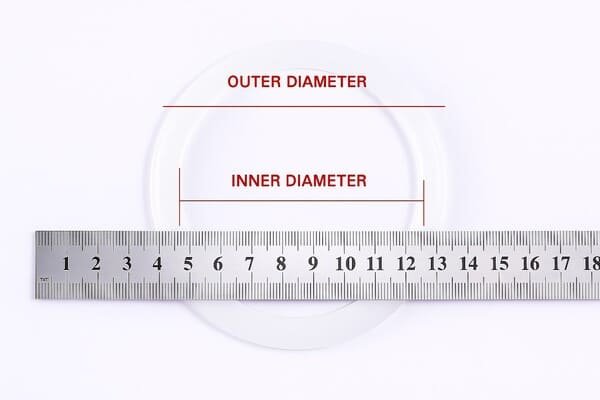Leaky bottles ruin brands and waste money. I fix leaks with the right silicone gasket, not a stronger cap.
Choose platinum-cured, FDA/LFGB-compliant silicone with the right hardness, geometry, and compression set. Size it to the neck finish. Verify with extraction tests and torque trials.

I will show my step-by-step method. I will also share checklists and tables that buyers can copy into drawings and POs.
What makes a silicone gasket “food-grade” for bottles?
Bad assumptions cause recalls. Many teams ask for “food safe” and stop there. I go deeper and remove doubt with documents.
Food-grade silicone means a VMQ compound that passes food-contact extraction tests and uses compliant pigments. Typical anchors are FDA 21 CFR 177.2600 for the US and EU 1935/2004 with migration testing for Europe.
I always name the regulation on the drawing and the PO. I ask for the exact compound code1 and color. I require a recent test report. I match that report to the part label and the COA. I often add post-cure2 to reduce odor.
Compliance anchors I write down
- ✅ FDA 21 CFR 177.2600 extraction (water & n-hexane)
- ✅ EU 1935/2004 framework + migration test summary
- ✅ Optional: LFGB3 for Germany, USP Class VI4 for higher hygiene
- ✅ Pigments5 that are approved for food contact
Document pack I keep
- Material data sheet6 with compound ID and curing system (platinum)
- Extraction or migration test for the same compound and same color
- Post-cure record (time/temperature)
- COA/COC with batch traceability from mixing to packing
Quick compliance comparison
| Region | Regulation | Typical Evidence | My Note |
|---|---|---|---|
| US | 21 CFR 177.2600 | Extraction report + COC | Always for US |
| EU | 1935/2004 | Migration test + DoC | Needed for EU |
| DE | LFGB | LFGB test report | Buyer-driven |
| Pharma | USP Class VI | Class VI report | Optional buffer |
Which hardness works best for bottle caps and closures?
Wrong hardness causes drips or damage. I choose hardness with clamp load, cap design, and lining surface in mind.
Most bottle gaskets use 50–70 Shore A. Lower hardness seals at low torque. Higher hardness survives knife edges and hot-fill. I set a 15–25% squeeze target to keep seal force without creep.
I test with a torque map. I increase torque in small steps until there is no bubble in a water bath test. I then add 10% margin. I record the value. I repeat after a 24-hour dwell to see relaxation. If the seal fails after dwell, I raise hardness or adjust squeeze.
Hardness guide I use in quotes
| Shore A | Typical closure | Why I pick it | Watch-outs |
|---|---|---|---|
| 40–50 | Light-torque caps, snap lids | Easy sealing at low force | Risk of extrusion at high temp |
| 60 | Standard screw caps | Balanced seal and durability | My default for water and juice |
| 70 | Hot-fill, knife-edge lands | Resists cuts and creep | Needs higher torque |
| 80 | Aggressive CIP, rigid seats | Shape retention | Check tolerance class (DIN ISO 3302-17) |
Geometry rules that help sealing
- I avoid sharp 90° edges on the gasket. I add a small radius.
- I use a land that centers on the neck finish.
- I design a lead-in to reduce cut risk during capping.
- I set squeeze at 15–25% based on cap and liner stiffness.
How do I size and design the gasket for a reliable bottle seal?
Great material cannot save bad geometry. I start with the neck finish and the cap land width. I size the cross-section to hit the squeeze window at the real torque.
I match the gasket ID/OD to the neck finish, select a cross-section that hits 15–25% compression, and add a locating feature if the cap allows it. I verify with leak, vacuum, and drop tests.

I ask for the neck standard8 (e.g., 28/410, 38/400). I also ask for cap drawings. I check the land width and flatness. I then simulate squeeze. If the cap has a retention groove, I add a small bead on the gasket to lock it in place. For hot-fill9, I bias the section to reduce creep.
Sizing checklist I follow
- Neck finish: nominal ID/OD and tolerance
- Cap land width and flatness, runout if known
- Target squeeze: 15–25% at nominal torque
- Gasket section: flat, D-profile, or bead depending on land
- Venting or vacuum panels if product degasses
Example sizing table (template)
| Input | Value | Result |
|---|---|---|
| Neck finish ID (mm) | 21.0 ±0.1 | Gasket ID 20.9 for light interference |
| Land width (mm) | 2.6 | Section width 2.4 to avoid overhang |
| Target squeeze | 20% | Section height chosen to 1.80 mm at 20% |
| Torque (N·m) | 1.6 | Verified no-bubble at 40 °C |
Tip: I add a 0.2–0.3 mm inner radius on the gasket to avoid knife-edge cuts. I also specify DIN ISO 3302-1 tolerance class (often M2 for molded gaskets) to keep production stable.
What temperatures and cleaning cycles can the gasket handle?
Bottling lines see hot-fill, tunnel pasteurization, and repeated wash cycles. Silicone handles heat but needs the right grade and cure.
Food-grade platinum silicone runs from −60 to +200 °C, short peaks to +220–250 °C. Compression set is the real limiter under heat and torque. I choose a compound with ≤25% compression set at 175 °C/22 h when hot-fill or pasteurization is present.
I check the liquid type. Oils and flavors stress silicone at heat. If the product is fatty or aromatic, I verify swelling10 with a 24–72 h soak test at the expected temperature. For high-pH caustic cleaning, silicone usually holds. For strong oxidizers, I shorten maintenance intervals or choose a special compound.
Temperature and performance snapshot
| Property | Standard FDA VMQ | Premium Platinum, post-cured |
|---|---|---|
| Working temp. | −50 to +200 °C | −60 to +220 °C (short +250 °C) |
| Compression set @ 175 °C | 35–45% | 15–25% |
| Odor/taste risk | Medium | Very low |
| Best use | Cold/ambient fills | Hot-fill, pasteurization |
My thermal and cleaning notes
- I avoid over-torque at high temperature. Creep rises fast.
- I post-cure gaskets to lower volatiles and odor.
- I confirm torque after the first thermal cycle11.
- I log a replacement interval12 based on a short pilot run.
Which tests and certifications should I ask for before mass production?
Audits need facts, not claims. I collect proof at the sampling stage and reuse it for each release.
I ask for FDA 21 CFR 177.2600 extraction, EU migration (if needed), hardness and compression set curves, and a simple leak test protocol. I keep lot traceability and a COA for every shipment.

I send a one-page test plan with every RFQ. Suppliers know exactly what to prepare. I run torque-leak test13s in-house with water and then with product. I record temperature, torque, and pass/fail. I use that data to lock the final spec.
My pre-production test pack
| Test/Doc | Purpose | Pass Criteria |
|---|---|---|
| 21 CFR 177.2600 extraction | US food contact | Within limits |
| EU migration (overall/specific) | EU market | Within limits |
| Hardness (ASTM D2240)14 | Spec match | 60 ± 5 ShA unless noted |
| Compression set (ASTM D395) | Seal force retention | ≤25% for hot-fill |
| Leak test vs torque | Field reality | No bubbles at spec torque |
| COA/COC + lot labels | Traceability | Batch match |
Will pigments and additives affect compliance or performance?
Color helps inspection. It can also break compliance if I ignore pigment rules. I select pigments with clear approvals and I check their impact on extraction.
I use compliant pigments for blue, white, or translucent parts. I avoid carbon-black for food bottles unless there is a specific need and proof. I verify that color does not raise extractables.
Blue is popular for visual and metal detection systems. White looks clean but may show stains. Translucent is safe and often tests best. If a brand requires a special color, I plan a longer approval time and run fresh extraction test15s. I also check UV stability if the bottle sees light.
Color decision table
| Color | Visibility | Typical Use | Note |
|---|---|---|---|
| Translucent | Medium | General food, water | Lowest risk |
| Blue | High | HACCP visual checks | Easy detection |
| White | Medium | Dairy, pharma look | Can stain |
| Red/others | High | Brand codes | Require extra test time |
How do I balance cost, MOQ, and lead time for custom bottle gaskets?
Food-grade projects need control and speed. I control cost with standard sections and molds. I keep a clear timeline and avoid late surprises.
I use standard hardness and existing tool sizes when possible. I freeze the compound early. I plan post-cure capacity. I run first-article approval with a simple PPAP: material certs, dimensional report, and leak/torque results.
Typical schedule I share
- Tooling: 2–4 weeks (compression/transfer)
- Material lead: 1–2 weeks for standard colors
- Post-cure: 4–8 hours (batch size matters)
- First articles + tests: ~1 week
- Production: 1–3 weeks by volume
Cost levers you control
- Pick 50/60/70 ShA to use common compounds.
- Approve blue/translucent to avoid long pigment work.
- Reuse stock profiles when fit allows.
- Combine orders to fill post-cure ovens efficiently.
✅ Highlights
- Use platinum-cured VMQ with FDA 21 CFR 177.2600 (and EU 1935/200416 if needed)
- Target 15–25% squeeze and match hardness to torque
- Verify compression set for hot-fill and pasteurization
- Lock pigments with compliant options and new extraction tests
- Approve with a torque–leak protocol and keep traceability
Conclusion
The right food-grade silicone gasket protects your brand and your line. I choose compliant material, set the right hardness and squeeze, verify with torque and leak tests, and keep clean documents.
🛠️ Work with Julong Rubber
- I can send sample gaskets in 50/60/70 ShA
- Email drawings to info@rubberandseal.com for a sizing proposal
- We are Julong Rubber in China. We make custom food-grade silicone gaskets for bottle caps and closures. B2B wholesale only
-
Understanding the significance of the exact compound code can enhance compliance and product quality. ↩
-
Exploring post-cure benefits can help reduce odor and improve gasket performance. ↩
-
LFGB is a critical standard for food safety in Germany; explore its implications for manufacturers. ↩
-
This certification is vital for ensuring the safety of medical products; learn about its standards. ↩
-
Knowing compliant pigments is essential for maintaining safety in food packaging. ↩
-
A material data sheet is crucial for understanding the properties of materials used in production. ↩
-
This standard is important for maintaining quality and consistency in molded gaskets. ↩
-
Knowing neck standards is essential for ensuring compatibility in bottle design. ↩
-
Understanding hot-fill challenges can help in selecting the right materials for high-temperature applications. ↩
-
Swelling can compromise gasket integrity; learn how to mitigate this issue. ↩
-
The first thermal cycle can reveal critical performance issues; understanding it is key for quality assurance. ↩
-
Establishing a replacement interval is crucial for maintaining operational efficiency and safety. ↩
-
Leak tests are essential for ensuring the reliability of seals in packaging. ↩
-
Understanding ASTM D2240 is crucial for ensuring the right hardness in food-grade materials, impacting seal performance and compliance. ↩
-
Extraction tests are vital for ensuring that materials do not leach harmful substances. ↩
-
Understanding EU regulations is essential for compliance in the European market. ↩








